Two of the talents behind The Mandalorian reflect on their creative quest to the third season of the hit series, now streaming on Disney+.
It’s immediately apparent that Jon Favreau and Dave Filoni have worked together off and on for more than 15 years as they settle in for a joint interview ahead of The Mandalorian’s Season 3 premiere on Disney+.
Sometimes Favreau, the creator and executive producer of the series, begins a sentence and Filoni, also an executive producer, finishes the thought. They often erupt into laughter, in awe of their good fortune and a collaboration that began at Skywalker Ranch when Favreau was mixing Iron Man, the film that would launch the Marvel Cinematic Universe, and Filoni was working on the first season of Star Wars: The Clone Wars. “We're fortunate, you know,” Filoni tells StarWars.com. “Between Jon and I, we get along like we're playing with our old Kenner toys.”
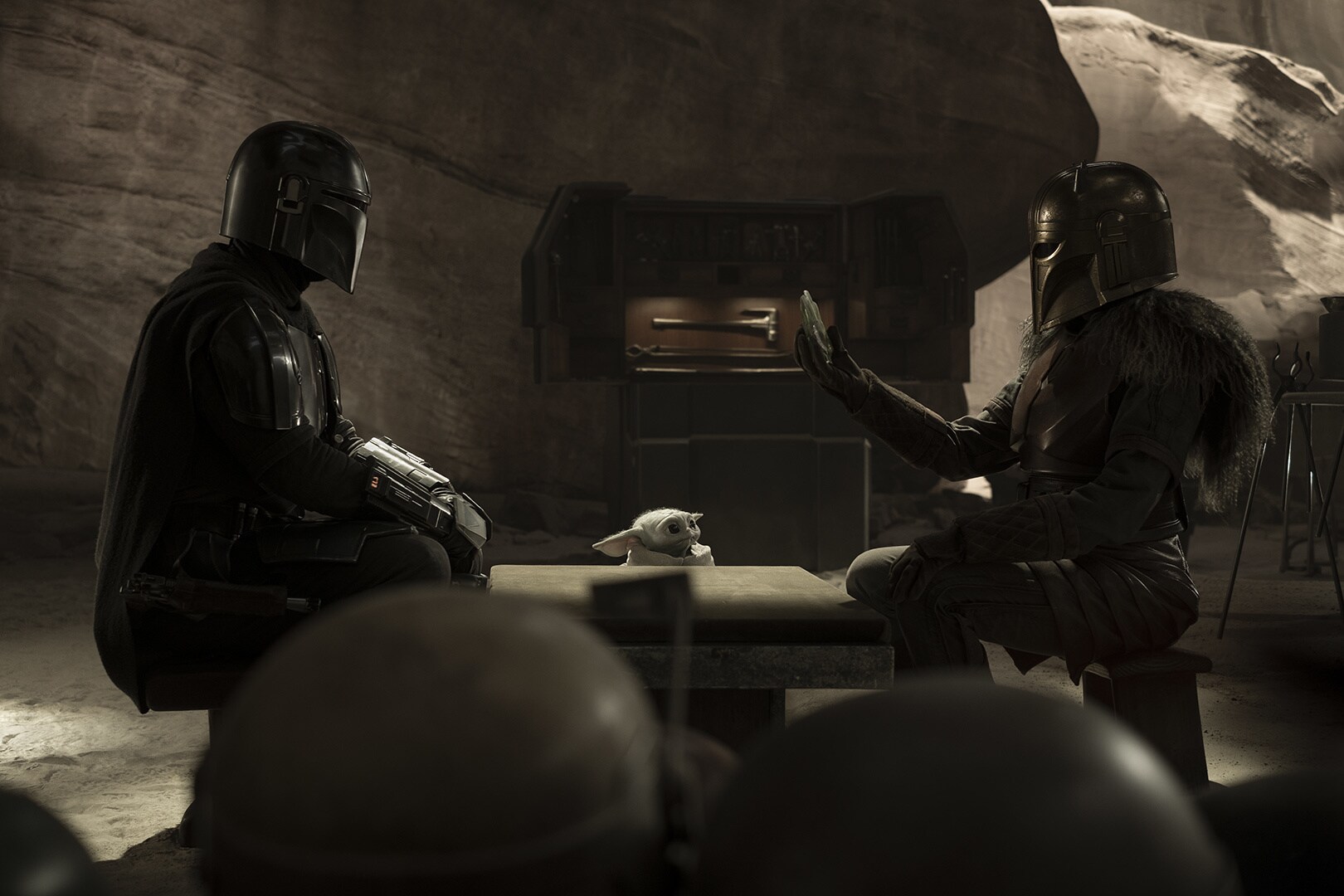
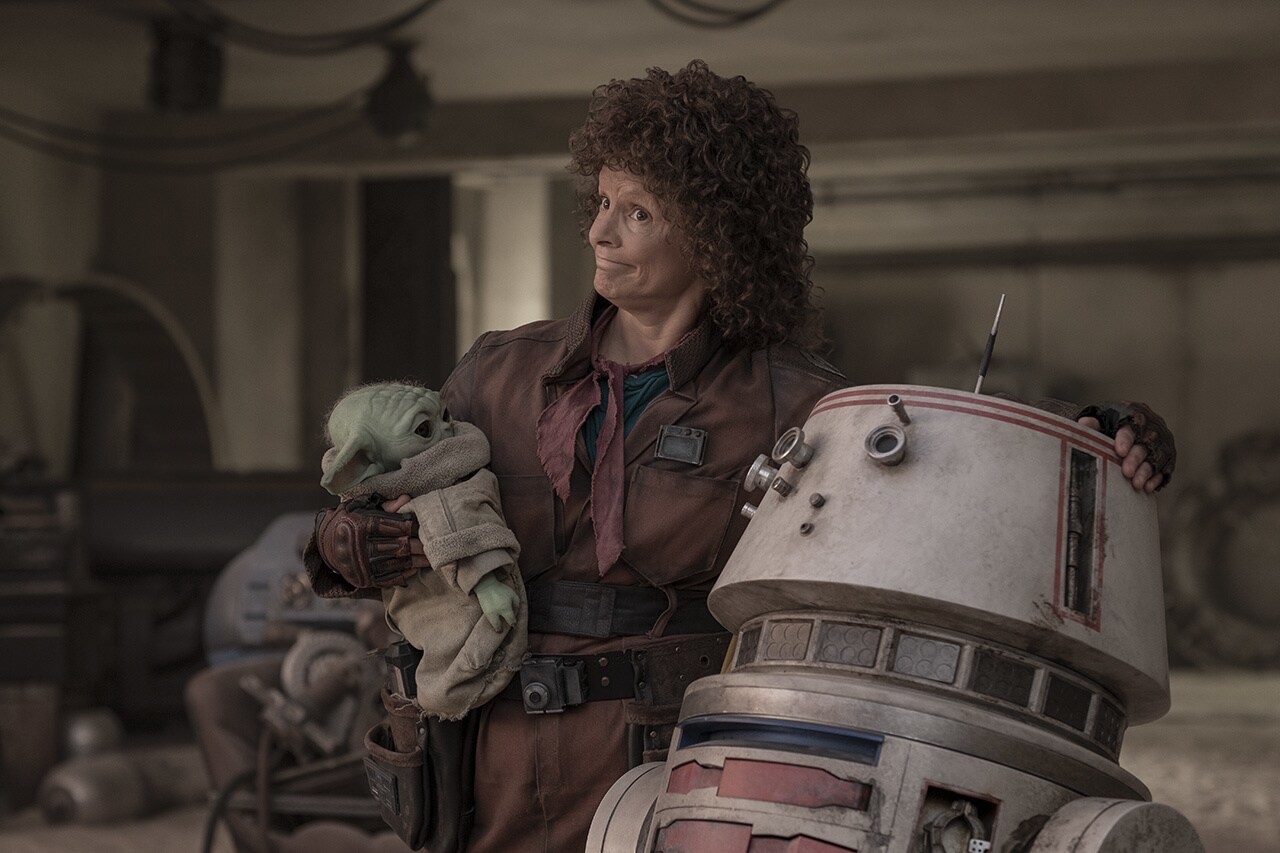
Once again, Din Djarin and Grogu are on a quest, this time to Mandalore. And the behind-the-scenes makers, Favreau and Filoni, have dug into their creative toy chest to add new species and characters like the Pirate King Gorian Shard and evolve familiar characters by giving Bo-Katan a new throne on Kalevala. They’ve also chosen some deep-cut characters to add to the mix — including a return to Tatooine to pick up R5-D4, the same droid whose bad motivator put R2-D2 on course for delivering Leia’s urgent message to Luke Skywalker in Star Wars: A New Hope.
“We’re in this time period post-Return of the Jedi, that in some ways we think of as all the way up to Episode VII [Star Wars: The Force Awakens],” Filoni says. “You always move between big known things in the cinematic world and we plot those out. We discuss groups. We discuss characters. We discuss who should come into the story or who should not.” Luke Skywalker and Artoo previously joined the fray in the epic Season 2 finale, a surprise that was concealed even in concept art as the proposed return of Plo Koon. “And obviously, by the third season, we have a lot of people in play already.”

To map it all out, including the various Mandalorian factions glimpsed in the trailer, the creators rely on whiteboards. “I love it. You dry-erase and — boom! — gone,” Filoni says. “It's a lot of meticulous whiteboarding and figuring out time periods and timelines and stories that have something to do with what we're doing and stories that don't. It's all valuable to us to understand what's going on in the greater galaxy, so you understand the history of the period, which informs our characters.”
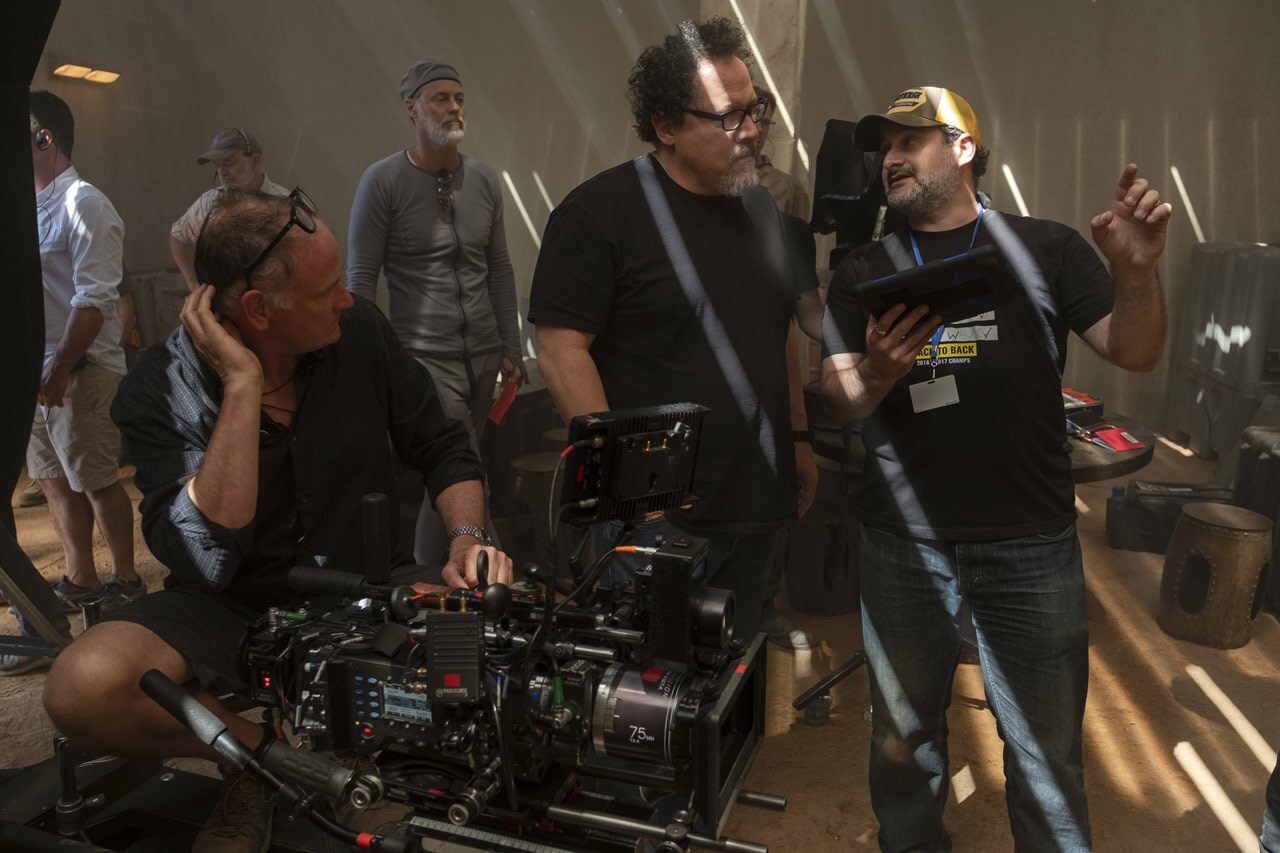
“It was pretty fresh snow for a while, you know?” adds Favreau. “You had the clues from what we knew from the movies that came before this. We know what's happening after and we knew The Clone Wars. And then there's even EU material — Legends — that have been embraced by the fans. So, we want to account for everything and take everything into consideration.” That includes their own secret pieces of the puzzle, the forthcoming Ahsoka series and Skeleton Crew, in addition to The Book of Boba Fett, which directly intersected with the Mandalorian’s journey and reunited Din Djarin and Grogu. “We have other stories that are taking place that we want to make sure are consistent. And Dave's really the pivot point for all of it.”
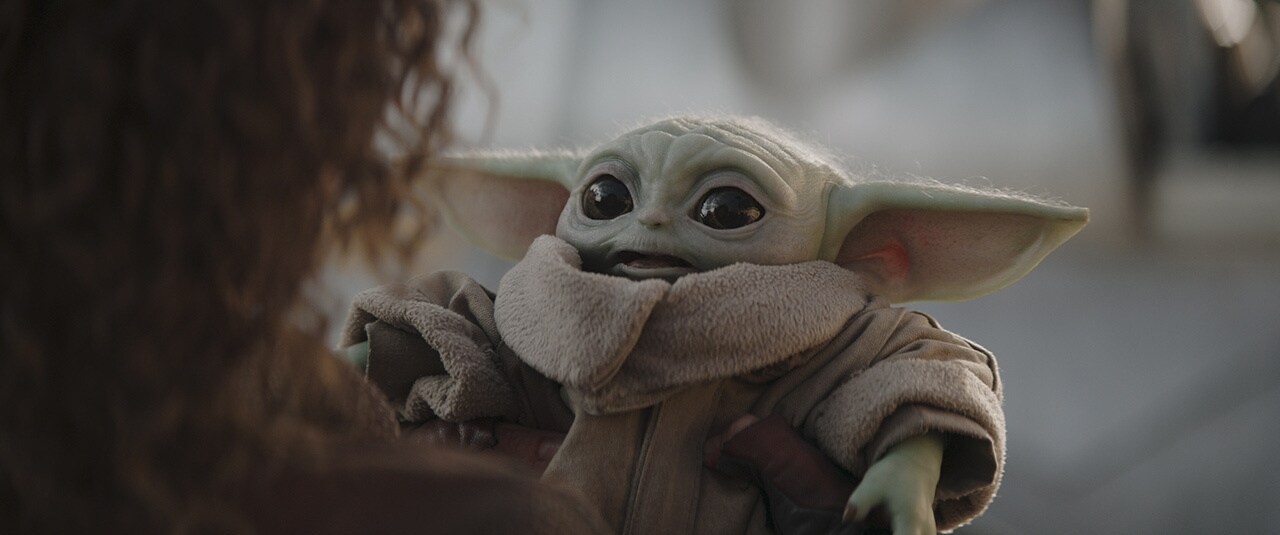
Baby names
The production is famously guarded, having successfully kept the existence of Grogu a secret from the public until he peeked out of a hovering pram in the series premiere. And Favreau feels a profound responsibility as the creator of the series. “You have a responsibility for Star Wars, to George [Lucas] and to Kathy [Kennedy] and to the people who brought me in,” Favreau says. “And the audience. They're invested in these characters. And you have young people who are growing up with the characters and what they represent. You feel very protective of that, and trying to hold as high of a standard as you can. I think those moments — the Baby Yoda reveal was very organic to the story. And just the idea of surprising to make it a bit of a left turn to people's expectations that this was going to be a guy runnin' and gunnin' through the galaxy. That was a nice twist. And I'm really happy that [everyone] supported us keeping that a secret. We put the audience experience first there.”
Grogu — or Baby Yoda, BY, The Child, and Baby G among other nicknames given by fans and crew alike — was canonically named by Favreau, similar to the way one might christen their new puppy.
“He’s cute, but he's a little ugly. He's ugly-cute,” Favreau says, eliciting the interviewer’s defense of his adorable nature, to which Favreau quickly concedes. “He's adorable because he's not perfect. He's got the cheeks, but he's got like weird little pointy teeth and he's got weird peach fuzz. In our design, when he looked too cute, he didn't look right. We found that right balance.”
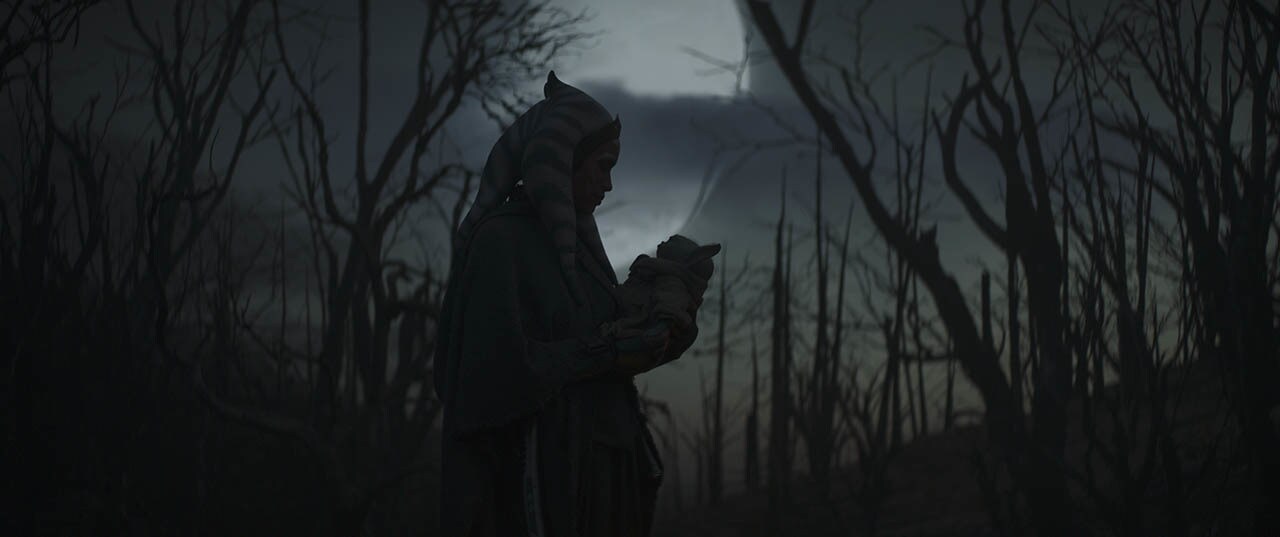
Filoni directed the Season 2 episode, “Chapter 13: The Jedi” that first revealed Grogu’s name to the world, thanks to Ahsoka Tano. “It was good to have Ahsoka there cause she's a good balancing point,” Filoni says. “Mando at first reacted like the audience. ‘Grogu? That's strange.’ But when he says it, Grogu looks at him. And I always related that to when I have a dog and the dog starts to learn its name. You say its name, it looks at you, it's the most heartwarming thing. And so when you see that he recognizes his name and that until Ahsoka says his name, that he probably hasn't heard it in a long time — it's like, how could you reject that?”
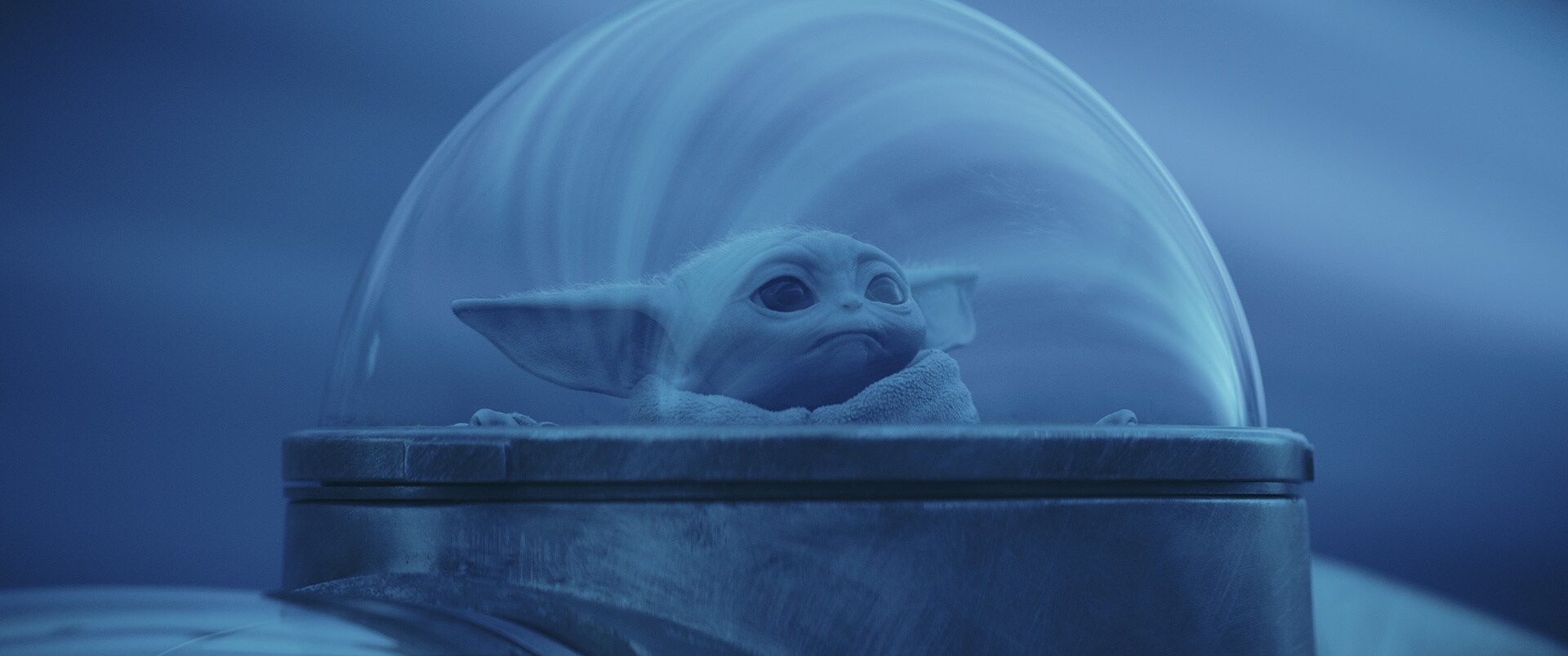
“That’s the thing with Grogu,” Favreau adds. “He's like part dog, part human, part reptile. He's a big mixture of everything…And also as he gets older, he won't outgrow the name. It's not a cute little name and then, you know, he's as old as Yoda and he still has a weird, cute name,” Favreau says with a laugh. “‘Sparky.’ You know, you don't want to be ‘Sparky’ and be like 600 years old. It was also hard because no matter what we named him, it wasn't going to be — it couldn't be — Baby Yoda.”
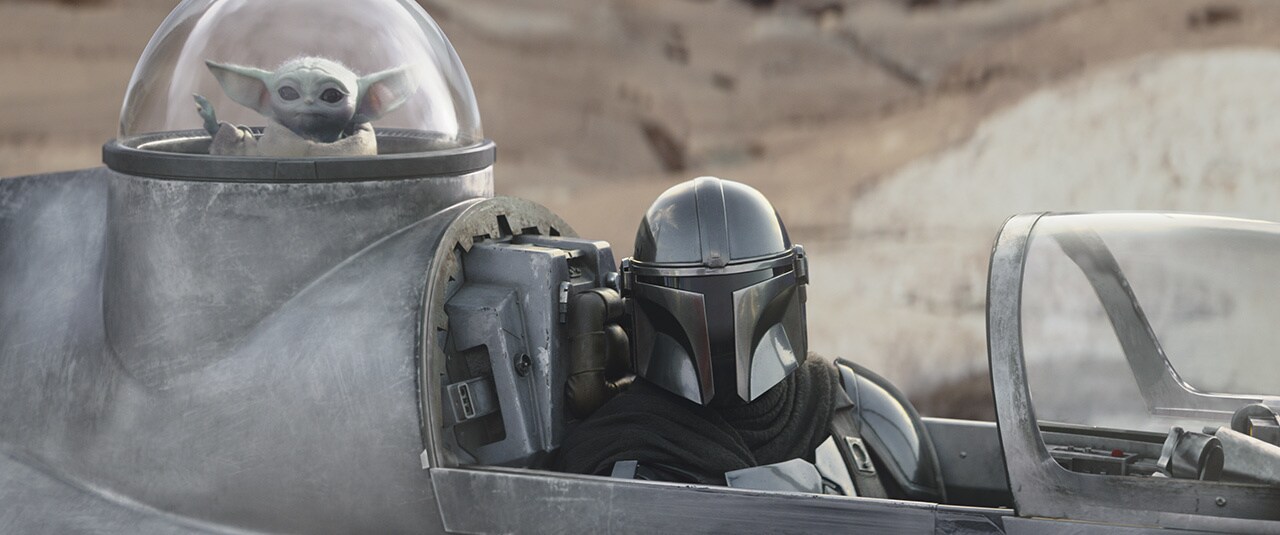
“You're telling the story you're telling”
As the next chapters in the critically-acclaimed series unfold, no one beyond the core production cast and crew know what surprises are in store and where the story is headed next.
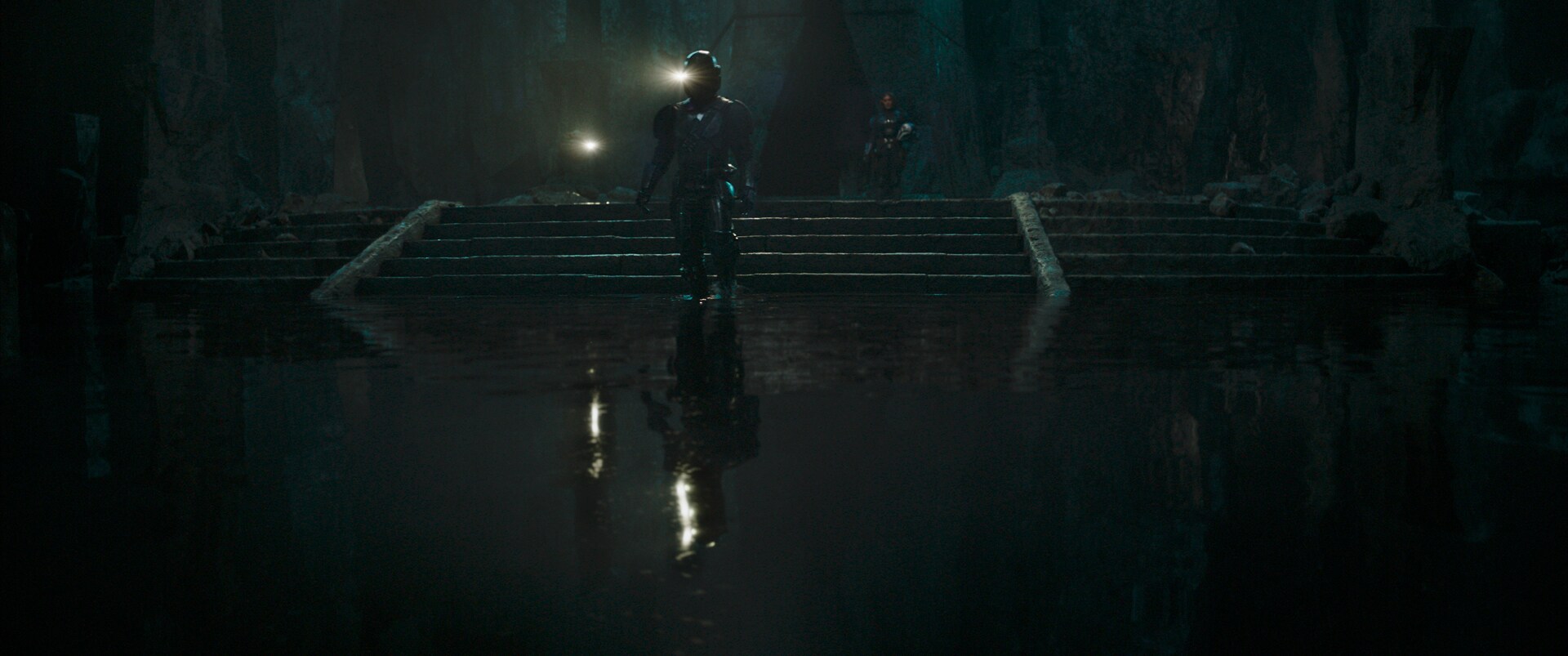
“We know that the Mandalorian had removed his helmet and, instead of being written off completely, it's been learned that if he could return to Mandalore and bathe in the Living Waters, that he could be purified and forgiven,” Favreau says, a journey that takes us to “Chapter 18: The Mines of Mandalore.” “We know that Bo-Katan wanted to go back there, too, but now he has the Darksaber, which is something that she had wanted.”
“It's like I'm watching the show now,” Filoni interjects with a laugh.
“We have a lot of trajectories that are lined up and then we have different factions of Mandalorians, right?” Favreau continues. “And the resurgent Empire is out there somewhere and we know that that's growing. So as we come into Season 3, we know that all of these different intersecting vectors are happening. We’re going to see the relationship evolve between our two leads.”
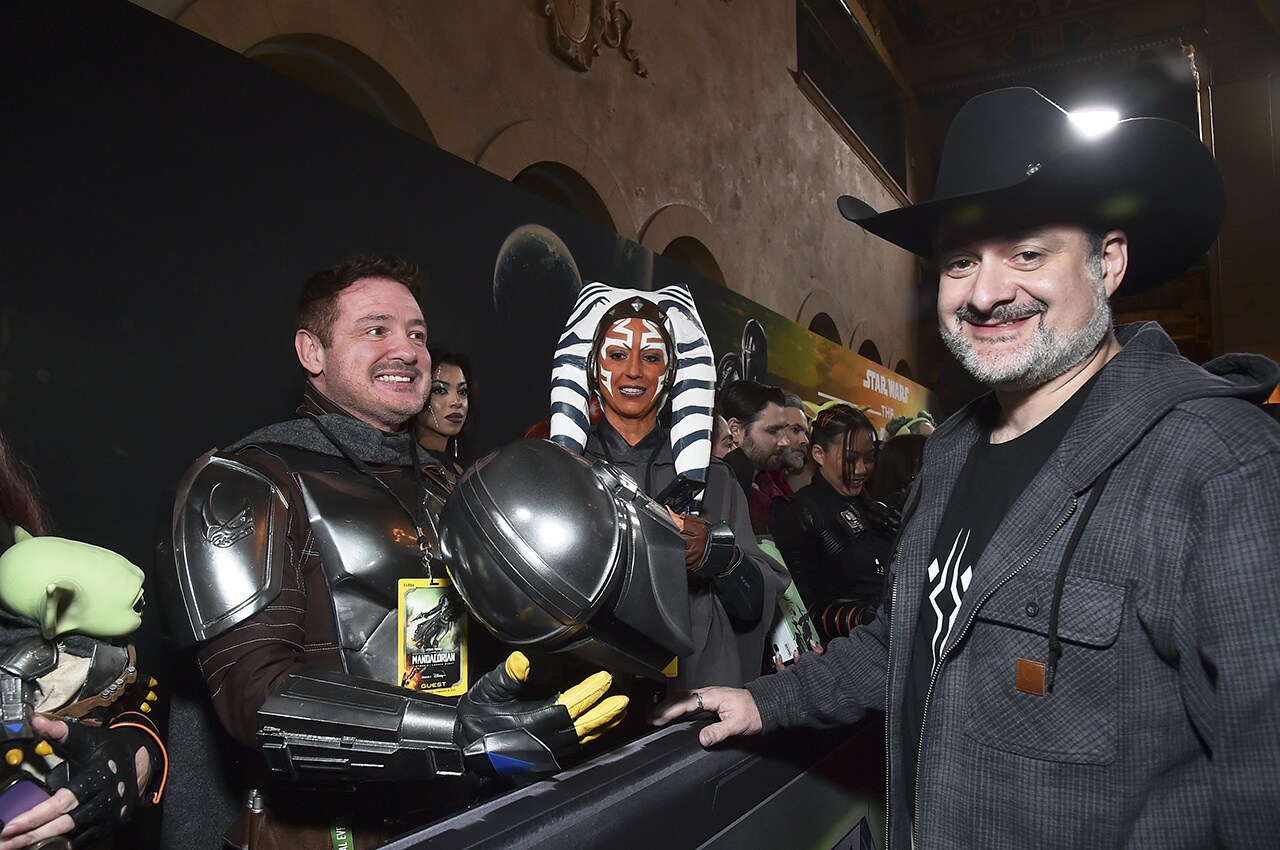
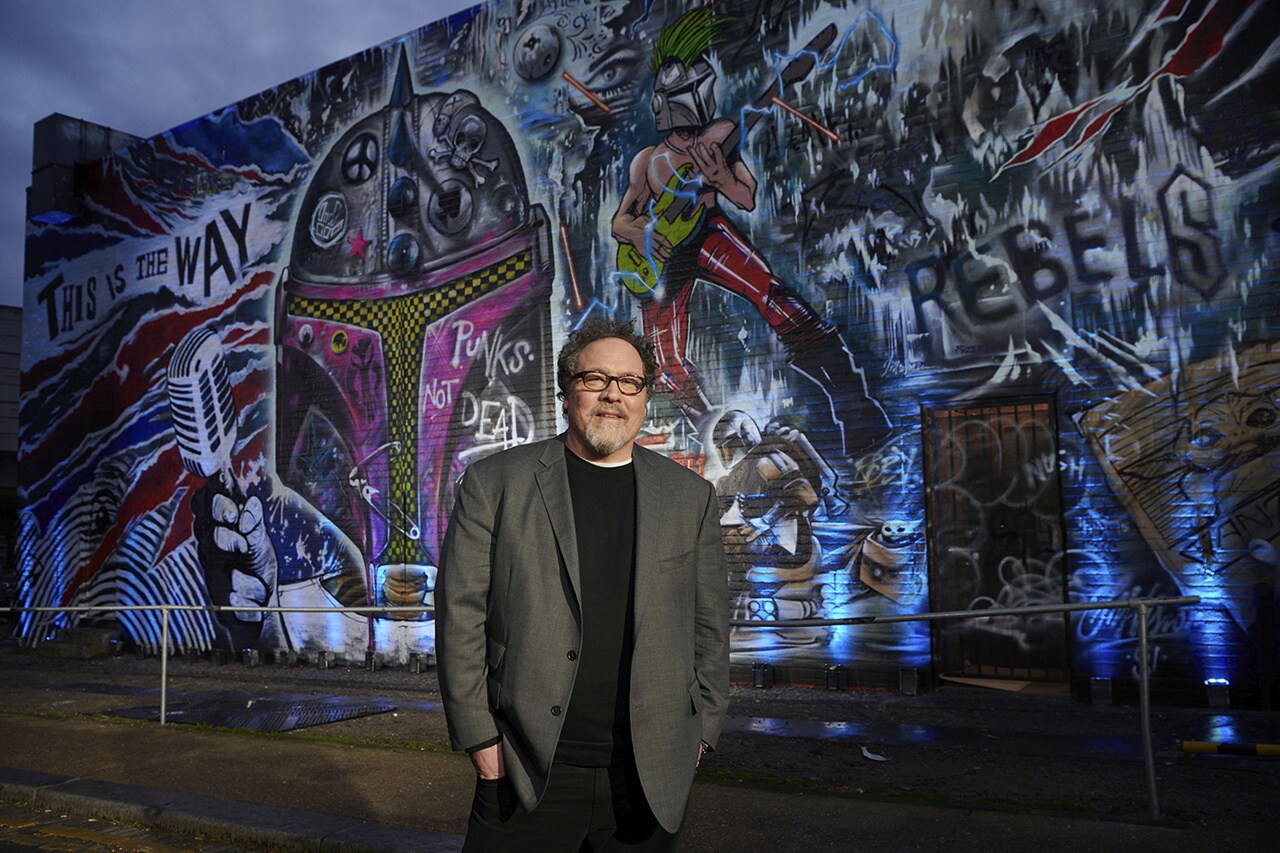
Favreau and Filoni are surprisingly insulated from the effects of helming a global phenomenon, a skill that Filoni has honed over 15 years of working in the Star Wars galaxy. “You know, George [Lucas] taught me, you're telling the story you're telling," Filoni says when asked if the series’ success impacts his creative process now. "And I think we're incredibly lucky that people have responded the way they do. I learned a long time ago, people just don't like this because you stick the name Star Wars on it. That's not good enough. You have to care. You have to put a lot of work into it.” That starts with Favreau and Filoni, and their creative toy box and whiteboards, and ripples out to the rest of the cast and crew. “They love it. They research things. They find the right items to make the props. They put the extra time in to make the costumes. You know, Kathy Kennedy, she was adamant about the level of visual effects that this thing needed to have there. It has to be equal to a movie. Everybody invests in this. And so, you know, we are delivering something that we can be proud of and that we like as fans. At the end of the day, you can only make something that you really enjoy and hope that other people like it. But the response to Grogu, when people saw him and that was on a level that even though I'd been with Star Wars a while, I had never experienced anything like it. I think that's a once-in-a-lifetime thing. You're lucky if you're ever a part of something like that. If anything, it puts more pressure on you because you know how many eyes are watching this. The expectation has grown. But it's a privilege to have that.”
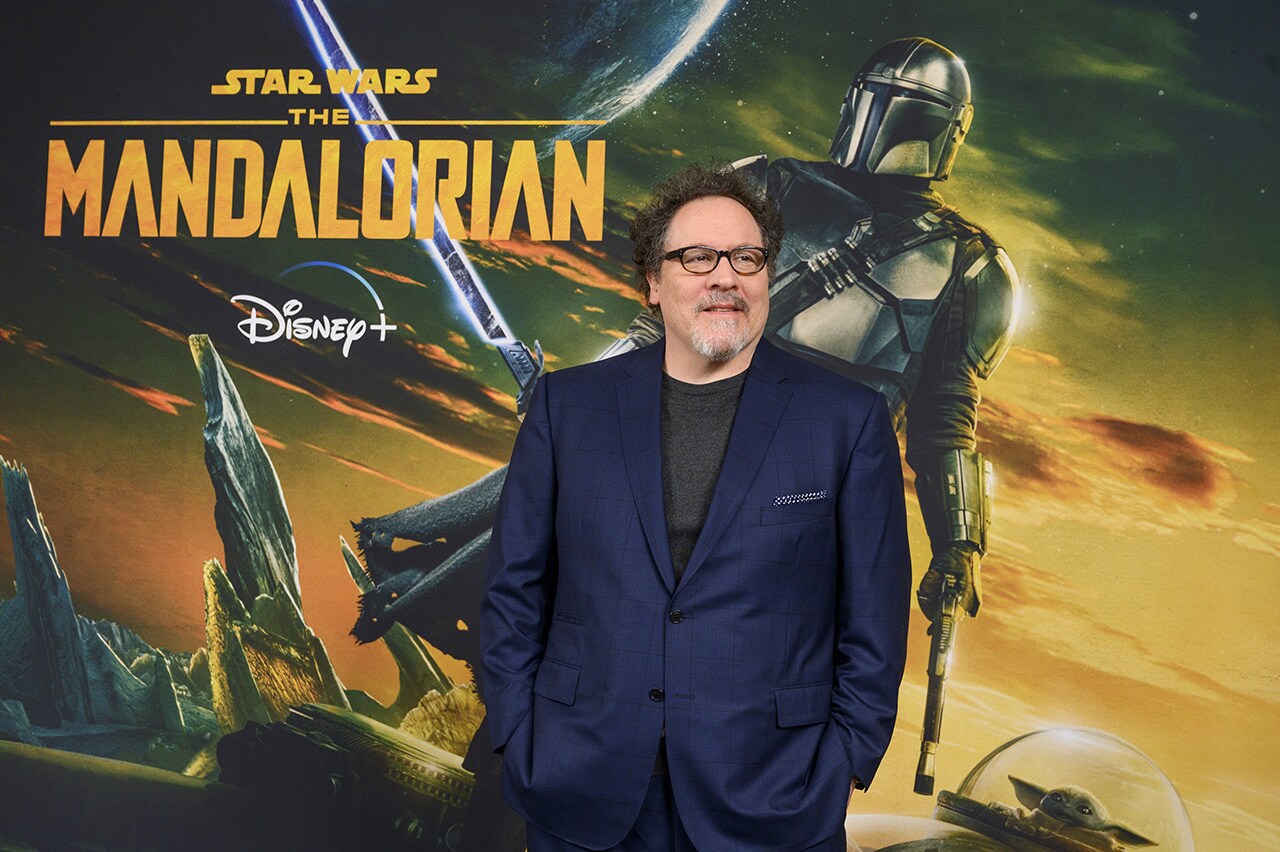

Favreau has been a part of the galaxy almost as long, first stepping into the role of Pre Vizsla in Star Wars: The Clone Wars, the leader of Death Watch who wielded the Darksaber in animation. “Life is weird,” he says. “In retrospect, it looks like it has followed some path. But at the time it just felt like we were doing things that seemed fun and cool and I had no idea [it would lead to The Mandalorian]. I definitely feel a connection to the Darksaber because I was the first one to wield it.” The idea for the Darksaber came from Lucas himself, a rewrite after Favreau initially recorded the episode with dialogue for a vibroblade. “George didn't like the logic of vibroblade being able to parry a lightsaber, so he invented the Darksaber, and I had to read the whole monologue about how it was found in a Jedi Temple. And I was telling my wife, she's like, ‘That's the coolest thing in the world.’ And it became so cool that we ended up making a whole TV show about it,” he says with a laugh. “That whole idea and how profound that thing is, that Tarre Vizsla was both Mandalorian and Jedi, that implies so much because those were two diametrically opposed warring factions. So, what does that mean? These are the clues that we look for, these little anomalies and things that instead of shying away from, we sort of delve into and explore.” That includes the factions of Bo-Katan’s Mandalorian sect and the Children of the Watch, whose members must never remove their helmets. “In The Clone Wars, they're always taking their helmets off. So what's going on there?” Favreau asks. “We pulled all that together and in Season 2 they confronted each other. Now, we see how all of that plays out.”
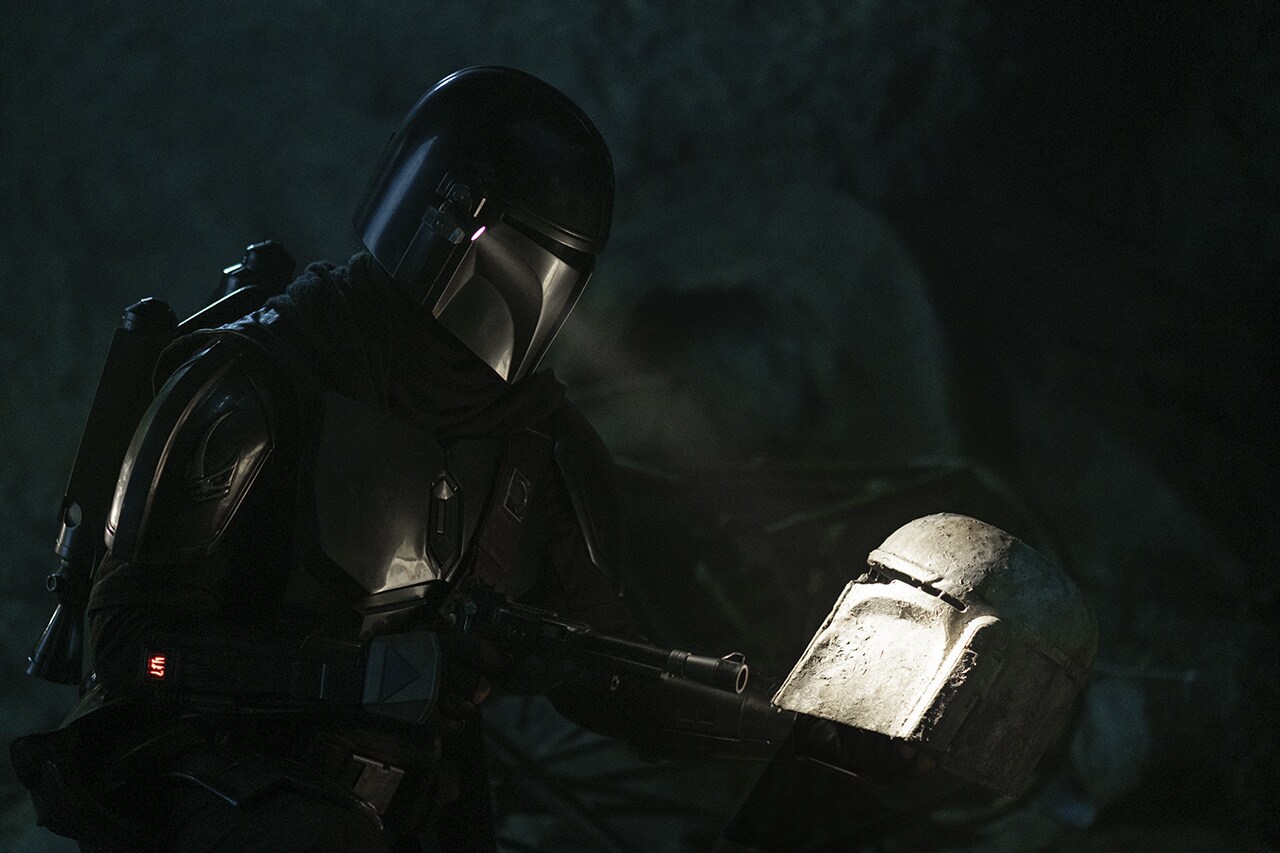
As for the best-kept-secrets and character surprises that the show has become known for, we’ll have to wait and see what comes next. “We like to have surprises,” Favreau says. “We like to have something revealed each episode. I like when everybody tries to see it at the same time and then talks about it and reacts to it, discusses it. Tries to guess what's happening next. That's part of the fun of the serialized storytelling. We want to make sure that each week a new piece of information comes out and that maybe things resolve in an unexpected way, but ways that feel justified and emotionally resonant and character-based. Look, we just hope that people enjoy this new set of stories. I certainly am enjoying doing what I'm doing here. Hopefully we can do it for a long time.”

